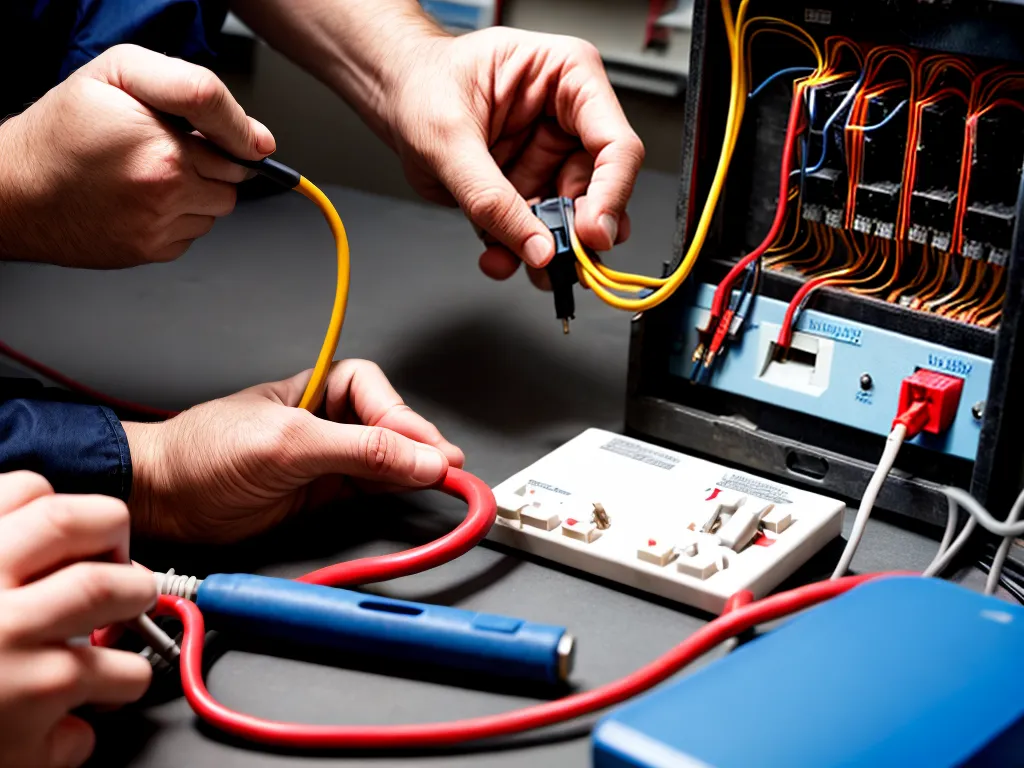
How to Troubleshoot Unusual Electrical Problems in Your Business
Introduction
Running a business comes with many responsibilities, one of which is maintaining the electrical systems. While some electrical issues are routine, like tripped breakers or faulty outlets, unusual electrical problems can occasionally arise that require more in-depth troubleshooting. As a business owner, it's important to have a basic understanding of electrical systems to identify and resolve these types of problems. This guide will provide an overview of how to troubleshoot unusual electrical issues in your business.
Common Causes of Unusual Electrical Problems
Faulty or Damaged Wiring
One of the most common causes of unusual electrical issues is faulty or damaged wiring. Some signs of wiring problems include:
- Frequent tripped breakers or blown fuses, even when not using much power
- Lights flickering, dimming, or surging in brightness
- Buzzing, sizzling, or burning smells from outlets or switches
- Discolored outlets or switch plates
Damaged wiring can occur due to rodents chewing on wires, exposure to moisture, loose connections, or simply aging and deterioration over time. Any disrupted connections in the wiring can cause short circuits, current fluctuations, and other problems.
Grounding Problems
Grounding issues can also lead to abnormal electrical behavior. Appliances and wiring require a proper ground connection to function safely. Grounding problems include:
- Missing or disconnected ground wires
- Inadequate grounding due to corroded contacts
- Multiple pieces of equipment connected to a single ground
Ungrounded or poorly grounded systems are vulnerable to power surges and can be hazardous.
Overloaded Circuits
When there is excessive strain on an electrical circuit, overloading can occur. Some signs of an overloaded circuit include:
- Frequently tripped breakers
- Overheated wires, outlets, or switches
- Dimming lights when multiple devices are powered on
Adding high-draw appliances like space heaters to a circuit or daisy-chaining power strips can potentially overload a circuit beyond its capacity.
Inspecting Electrical Panels
The electrical panel, or breaker box, is key for diagnosing unusual electrical issues. Here's what to look for:
Breakers
Inspect all breakers for signs of problems:
- Discolored or warm breakers - indicates overheating
- Breakers that don't switch cleanly between on/off - could signal issues with the switch or circuit
- Breakers that trip repeatedly - points to overloaded or shorted circuits
Fuses
With a fuse panel, check for any blown fuses and replace as needed with time-delay fuses of the appropriate amperage. Blown fuses suggest overloads or short circuits.
Labels
Labeled breakers make it easier to locate and isolate issues on specific circuits. Verify all breakers are clearly labeled. Add labels if needed.
Signs of Arcing
Look for charred spots or melted plastic on the panel or the smell of burning plastic. This can indicate dangerous electrical arcing.
Checking Connections and Wires
Loose, damaged, or corroded connections are often the root of unusual electrical problems.
- Inspect visible wires and cables for damage like cracks or charring.
- Check that all wires are securely connected at outlets and junction points. Tighten loose wire nuts and terminal screws.
- Clean any corroded connections like breaker terminals and ground contacts. Replace if severely corroded.
- Verify that wires are properly sized - undersized wires can overheat.
Pay particular attention to connections for frequently problematic circuits.
Testing Circuits and Components
For elusive electrical gremlins, more rigorous circuit testing may be needed.
Use a Multimeter
An essential tool is a digital multimeter. It can measure voltage, current, and resistance to evaluate circuits and devices. Know how to safely use a multimeter before testing.
Check Voltage and Amperage
Test outlet voltage to catch wiring faults causing abnormal voltage. Measure load current draw to detect overloads.
Isolate Sections
Narrow down issues by systematically isolating circuit sections. Turn off breakers or unplug devices section-by-section to pinpoint the problem area.
Inspect Devices and Fixtures
Check circuits powering flickering lights or malfunctioning appliances. Inspect devices and fixtures for signs of electrical arcing or heat damage that could indicate a faulty device. Test with a multimeter.
Evaluate Grounding
Use a multimeter to check for proper grounding. There should be continuity between neutral/ground contacts and zero voltage between neutral and ground.
Calling an Electrician
For safety, hire a licensed electrician rather than attempting hazardous DIY repairs if:
- The issue involves the main service panel or electrical mast.
- There are signs of significant electrical arcing or heat damage.
- You need to handle exposed high-voltage wires.
- The problem persists after troubleshooting.
Be sure to get all repairs inspected and approved after completion. Though unusual electrical issues can be perplexing, methodically troubleshooting and inspecting the electrical system helps identify and resolve the problem.